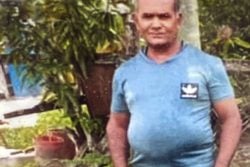Whatever happens over the final weekend of the Caribbean T20, even in last night’s tasty semi-final between Barbados and Trinidad & Tobago, the West Indies selectors should have had enough evidence from the preceding two weeks to immediately name a squad for the World tournament in Sri Lanka in September.
It is chronologically a long time off. In effect, there are only five such internationals in the interim, two against Australia in March, one against England in England in June and another two at home against New Zealand.
Although Clyde Butts and his panel will obviously appreciate that these are in environments significantly different from those to be found in Sri Lanka, they should know that they are matches best used for creating a settled team, not for experimentation.
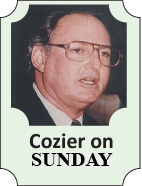 Whatever the shortcomings of T20, the World tournament is no meaningless knockabout.
Whatever the shortcomings of T20, the World tournament is no meaningless knockabout.
Quite apart from the prize money pot of US$20 million, the most of any International Cricket Council (ICC) event, it has had a profound effect on the game in more ways than its universal popularity, so evident in the attendances at the Sir Vivian Richards Ground and Kensington Oval in the Caribbean competition. India’s triumph in the first such event spawned the IPL that, in turn, bolstered its financial cricket muscle, created fees for players previously the preserve of American sports stars and international footballers and led to the spread of such leagues everywhere.
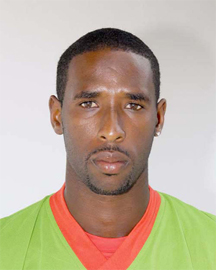
When England were champions in 2010 in the Caribbean, their captain Paul Collingwood said it was “right up there” with their Ashes victory over Australia the previous year. It was a previously unthinkable comparison.
The climb up from the bottom rungs of the ladder in Tests and One-Day Internationals is steep and long-term. Coach Ottis Gibson has cautiously targeted the 50-overs World Cup in 2015 for the real start of that hike.
By its very nature, T20 is far less predictable. India were long shots in 2007 as were Pakistan, the winners two years later.
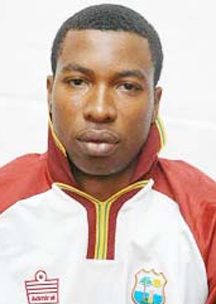
The absence of Chris Gayle, the reasons for which continue to be shrouded in intrigue, egotism and intransigence, unarguably weakens the prospects. After all, his breathtaking power-hitting at the top of the order make him the most sought after player by every T20 franchise team.
Yet the West Indies can still arrive in Colombo knowing they have as much chance as any of raising the trophy and pocketing the US$5 million champions’ cheque.
While such an outcome in a competition limiting bowlers to four overs an innings and an innings to 20 overs would have no bearing on the actual strength at Test or ODI level, it would be an enormous boost to self-confidence, absent for so long.
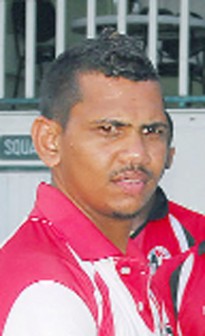
The most instructive aspect of England’s success in 2010 was consistency of selection. With one exception (to allow Kevin Pietersen to return to London for the birth of his son), they used the same eleven all the way through. It would be an advantage for the West Indies to start their Sri Lanka campaign with such an established side.
So what has come out of the 20 qualifying matches to lead to the best combination?
From the 25 of last year, Lendl Simmons, Darren Bravo, Marlon Samuels, Johnson Charles and Dwayne Smith (batsmen), Darren Sammy and Andre Russell (all-rounders), Ravi Rampaul, Fidel Edwards, Krishmar Santokie and Carlos Brathwaite (fast/swing bowlers) and Garey Mathurin, Davendra Bishoo and Ashley Nurse (spinners) are those who did enough, in varying degrees, to keep their names in the mix.
Others absent last year, for one reason or another, qualify high on the list.
Kieron Pollard and Dwayne Bravo returned from Australia’s Big Bash to qualify for selection. Given their all-round potential and extensive experience of T20s all over the world, they would be automatic choices.
Sunil Narine and the sanitised Shane Shillingford, both yet to flick their off-spinners and doosras in a T20 International, are unlikely to have to wait much longer.
Quality international batsmen in last year’s Champions League were bamboozled by Narine’s variations and control as were those in Trinidad and Tobago’s advance to the current T20 semis.
Shillingford has appeared for the first time since his action was cleared by the ICC and shown that he still has the ability to spin both ways, as Pollard discovered when his off-stump was hit by one of the balls of the series in Antigua. They could fill significant roles in Sri Lanka.
Last year, the selectors pulled a few rabbits from the hat. They might well do so this time. When they came up with Johnson Charles for the two matches in England in September the question was whether they had got the names back to front. When Ashley Nurse was deemed not fit enough and was withdrawn from the original squad, they replaced him with the previously unknown Garey Mathurin.
Much was made of the supposed St Lucian pressure for their selection but Charles top-scored in the first match and Mathurin’s four overs yielded him three wickets for nine from his four overs, and the Man of the Match award, in the second, his one and only T20I so far. They have been among those to the fore in the Windwards’ advance to last night’s semi-final.
So were Tino Best and Ryan Hinds in Barbados’ demolition of their first four opponents. Both now past 30, their days in West Indies colours might have been considered a long time past.
Best has bowled with the same genuine pace of old, combined with a new-found control of length, line and temperament; left-hander Hinds’ all-round ability has not diminished. Their inclusion would be unexpected but not unrealistic.
After tonight’s final at Kensington, the selectors can turn their attention to the next assignment, overseeing performances in the first-class tournament that starts February 3 as homework for the tough sequence of Test series to follow against Australia in the Caribbean and England in England.
Before then, they need to resolve their T20 squad.




